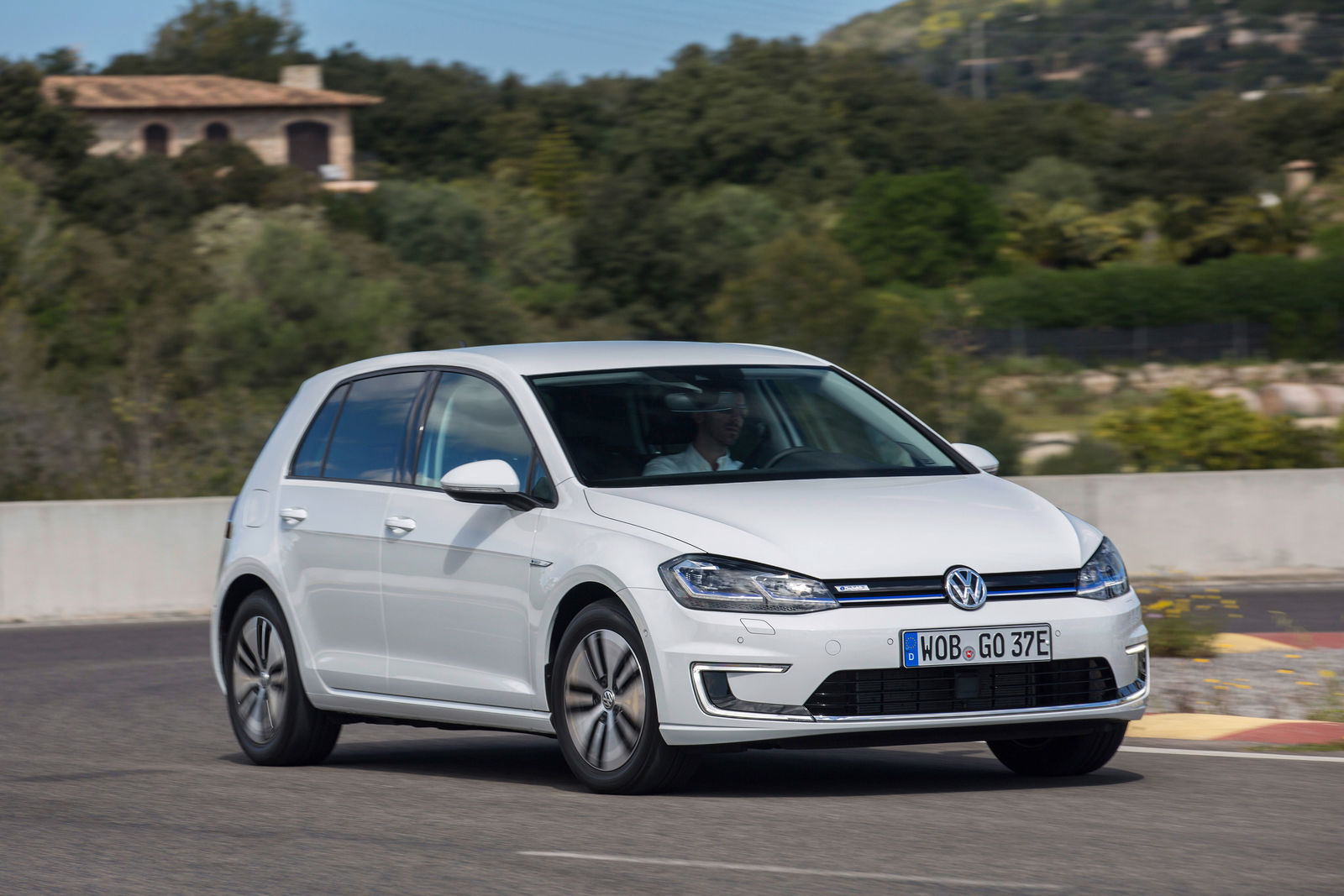Since 2014, the most popular car in Europe, the Volkswagen Golf, has also been offered as a zero-emission vehicle in the form of the e-Golf. The e-Golf was Volkswagen’s first major production model in the compact class to be equipped with an electric drive system. The second generation of the electric vehicle was launched in 2017 with new technology. Now, in 2019, as sales of Volkswagen electric vehicles will increase further, there will be positive economies of scale. And as a result of this, the costs of the technologies used will reduce. This effect is also having an impact on the price of the e-Golf: as of now, it is going down in Germany for the same equipment by €4,000 to €31,900.
The e-Golf boasts a very broad range of standard equipment. The second generation of the zero-emission Golf generally comes with the 9.2-inch Discover Pro flagship infotainment system. The specified interior of the e-Golf also includes features such as front comfort seats, a multi-function steering wheel and a leather gearshift grip. Also standard in the e-Golf are the Air Care Climatronic two-zone automatic air conditioning system and a heated windscreen. The exterior of the electric Golf makes a big impression with 16-inch alloy wheels (“Astana”), LED headlights, LED daytime running lights and LED tail light clusters.
With a range in real driving situations of between 170 and 230 kilometres, the e-Golf is perfect for the usage profile of people who use a car to travel in cities. For this reason, Volkswagen is using 1,500 e-Golf models for “WeShare”, the new car sharing programme launched in Berlin in June 2019. You can hire an e-Golf digitally using an app. In 2020, the “WeShare” fleet is set to be expanded with the new e-up! and ID.3. The e-Golf fleet currently drives within a range of 150 square kilometres. Interestingly, in Germany alone, the number of people using car sharing has risen by 14 times to around 2.46 million from 2010 to the beginning of 2019. These people will now increasingly drive an e-Golf with zero emissions around Berlin. Over the course of the next year, “WeShare” is also due to be launched in Hamburg and Prague.
No matter in which city or on which route the e-Golf is used: one of the model’s assistance features (eco alert system) helps drivers adopt an anticipatory driving style that saves energy. It does this by analysing predictive route data from the standard navigation system, as well as data on longitudinal dynamics from the motor control unit. Drivers are issued an alert via the multi-function display (MFD) or the optional Active Info Display instructing them to take their foot off the accelerator pedal whenever the e-Golf doesn’t need additional power to continue moving at a sufficient speed – e.g. if a speed zone or a curve is coming up ahead. Besides instructing drivers to take their foot off the accelerator pedal, the display also shows a graphic symbol depicting a curve, a fork in the road, an intersection, a speed limit sign or a roundabout, for example.
Volkswagen also offers an optional heat pump for the e-Golf that optimises the vehicle’s range in the winter, when the heating system is kept on more or less the entire time the vehicle is in motion. The heat pump, which is offered as an add-on module for the electric heater (high-voltage heater) and electrical air conditioner compressor uses heat from both ambient air and drive components. This significantly reduces the power consumption of the high-voltage heater. As soon as the heat pump is engaged, the range of the e-Golf increases by up to 30 per cent in wintry conditions when compared to a vehicle equipped with a conventional heating system.
Battery charging times vary depending on the power supply used. A complete charge from a wall box with an output of 3.6 kW takes 10 hours and 50 minutes, for example, while it takes only 45 minutes to charge the battery to 80 per cent of its capacity at a quick-charging DC (direct current) station with an output of 40 kW. Numerous processes, such as battery charging or activation of the stationary air conditioning system, can be initiated via smartphone using the e-Remote feature in the We Connect app.
In the current model, the 100-kW electric motor gets its power from a lithium-ion battery with an energy content of 35.8 kWh. As is the case with all electric vehicles, the electric motor’s maximum torque is available immediately. The maximum torque of the electric motor in the e-Golf is 290 Nm. The model’s great agility is particularly noticeable and with a speed of 9.6 seconds from zero to 100 km/h, the Volkswagen is certainly quick. The electronically limited maximum speed is 150 km/h.
